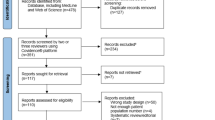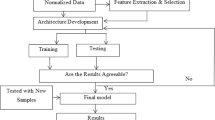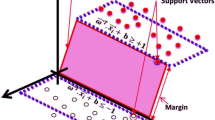Abstract
The ability to predict blood pressure changes during general anesthesia would assist anesthetists minimize the risk of complications due to hypotensive events. However, such prediction is not trivial. Evolving spiking neural networks are a relatively new computational method that may have application to this problem. NeuCubeST consists of a 3-dimensional network of locally connected neurons called a Spiking Neural Network reservoir (SNNr) and can be used to classify time series data for prediction. There are a number of design considerations when using NeuCubeST as a classifier of time-series data: what pre-processing of the raw data is required (pre-processing), how to convert the time-series data into a spike train (input-encoding), which neurons the data are connected to (input-mapping), and how many nearest neighbours to use in classification (classification). However, it is still unclear how sensitive NeuCubeST-based systems are to perturbations of any of the above. In this paper we evaluate the contribution of these design factors to blood pressure prediction using NeuCubeST. 6000 possible combinations of those NeuCubeST options were tested for each of 100 patients and for each a Signal to Noise Ratio was obtained. All four investigated design factors showed significant contribution to SNR. Intra-operative MAP prediction using NeuCubeST can be effective but performance is sensitive to the design choices.



Similar content being viewed by others
References
Bohte SM (2004) The evidence for neural information processing with precise spike-times: A survey. Nat Comput 3:195–206. doi:10.1023/B:NACO.0000027755.02868.60
Chilkoti G, Wadhwa R, Saxena AK (2015) Technological advances in perioperative monitoring: Current concepts and clinical perspectives. J Anaesthesiol Clin Pharmacol 31:14–24. doi:10.4103/0970-9185.150521
Dhoble K, Nuntalid N, Indiveri G, Kasabov N (2012) Online spatio-temporal pattern recognition with evolving spiking neural networks utilising address event representation, rank order, and temporal spike learning. In: The 2012 International Joint Conference on Neural Networks (IJCNN). Presented at the The 2012 International Joint Conference on Neural Networks (IJCNN), pp 1–7. doi:10.1109/IJCNN.2012.6252439
Gordon AC, Russell JA (2005) Goal directed therapy: how long can we wait? Crit Care 9:647–648. doi:10.1186/cc3951
Heldt T, Long B, Verghese GC, Szolovits P, Mark RG (2006) Integrating Data, Models, and Reasoning in Critical Care. In: 28th Annual International Conference of the IEEE Engineering in Medicine and Biology Society, 2006. EMBS’06. Presented at the 28th Annual International Conference of the IEEE Engineering in Medicine and Biology Society, 2006. EMBS’06, pp 350–353. doi:10.1109/IEMBS.2006.259734
Jensen EW, Nebot A (1998) Comparison of FIR and ANFIS methodologies for prediction of mean blood pressure and auditory evoked potentials index during anaesthesia. In: Proceedings of the 20th Annual International Conference of the IEEE Engineering in Medicine and Biology Society, 1998. Presented at the Proceedings of the 20th Annual International Conference of the IEEE Engineering in Medicine and Biology Society, vol. 3, 1998, pp 1385–1388. doi:10.1109/IEMBS.1998.747139
Ji S-Y, Chen W, Ward K, Rickards C, Ryan K, Convertino V, Najarian K (2009) Wavelet based analysis of physiological signals for prediction of severity of hemorrhagic shock. In: ICME International Conference on Complex Medical Engineering, 2009. CME. Presented at the ICME International Conference on Complex Medical Engineering, 2009. CME, pp 1–6. doi:10.1109/ICCME.2009.4906672
Johnson C, Roychowdhury S, Venayagamoorthy GK (2011) A reversibility analysis of encoding methods for spiking neural networks. In: The 2011 International Joint Conference on Neural Networks (IJCNN). Presented at the the 2011 International Joint Conference on Neural Networks (IJCNN), pp 1802–1809. doi:10.1109/IJCNN.2011.6033443
Kasabov N (2012) NeuCube EvoSpike architecture for spatio-temporal modelling and pattern recognition of brain signals. In: Artificial Neural Networks in Pattern Recognition. Springer, pp. 225–243
Kasabov NK (2014) NeuCube: a spiking neural network architecture for mapping, learning and understanding of spatio-temporal brain data. Neural Netw 52:62–76. doi:10.1016/j.neunet.2014.01.006
Kasabov N, Feigin V, Hou Z-G, Chen Y, Liang L, Krishnamurthi R, Othman M, Parmar P (2014) Evolving spiking neural networks for personalised modelling, classification and prediction of spatio-temporal patterns with a case study on stroke. Neurocomputing, Special issue on the 2011 Sino-foreign-interchange Workshop on Intelligence Science and Intelligent Data Engineering (IScIDE 2011) Learning Algorithms and Applications Selected papers from the 19th International Conference on Neural Information Processing (ICONIP2012), vol 134, pp 269–279. doi:10.1016/j.neucom.2013.09.049
Lee J, Mark R (2011) A hypotensive episode predictor for intensive care based on heart rate and blood pressure time series. Comput Cardiol 2010:81–84
Lowe A, Harrison MJ, Jones RW (1999) Diagnostic monitoring in anaesthesia using fuzzy trend templates for matching temporal patterns. Artif Intell Med Fuzzy Diagnosis 16:183–199. doi:10.1016/S0933-3657(98)00072-4
Lumley T, Diehr P, Emerson S, Chen L (2002) The importance of the normality assumption in large public health data sets. Annu Rev Public Health 23:151–169
Morris RW, Watterson LM, Westhorpe RN, Webb RK (2005) Crisis management during anaesthesia: hypotension. Qual Saf Health Care 14:e11. doi:10.1136/qshc.2002.004440
Rivers E, Nguyen B, Havstad S, Ressler J, Muzzin A, Knoblich B, Peterson E, Tomlanovich M (2001) Early goal-directed therapy in the treatment of severe sepsis and septic shock. N Engl J Med 345:1368–1377. doi:10.1056/NEJMoa010307
Saeed M (2007) Temporal pattern recognition in multiparameter ICU data (Thesis). Massachusetts Institute of Technology
Saeed M, Mark RG (2000) Multiparameter trend monitoring and intelligent displays using wavelet analysis. In: Computers in Cardiology 2000. Presented at the Computers in Cardiology, pp 797–800. doi:10.1109/CIC.2000.898645
Torikai H, Shimizu Y, Saito T (2006) Various spike-trains from a digital spiking neuron: analysis of inter-spike intervals and their modulation. In: International Joint Conference on Neural Networks, 2006. IJCNN’06. Presented at the International Joint Conference on Neural Networks, 2006. IJCNN’06, pp 3860–3867. doi:10.1109/IJCNN.2006.246882
Tu E, Kasabov N, Othman M, Li Y, Worner S, Yang J, Jia Z (2014) NeuCube(ST) for spatio-temporal data predictive modelling with a case study on ecological data, in: 2014 International Joint Conference on Neural Networks (IJCNN). Presented at the 2014 International Joint Conference on Neural Networks (IJCNN), pp 638–645. doi:10.1109/IJCNN.2014.6889717
Versaci M, Morabito FC (2003) Fuzzy time series approach for disruption prediction in Tokamak reactors. IEEE Trans Magnetics 39(3):1503–1506
Weiss YG, Cotev S, Drenger B, Katzenelson R (1995) Patient data management systems in anaesthesia: an emerging technology. Can J Anaesth J Can Anesth 42:914–921. doi:10.1007/BF03011040
Wo CC, Shoemaker WC, Appel PL, Bishop MH, Kram HB, Hardin E (1993) Unreliability of blood pressure and heart rate to evaluate cardiac output in emergency resuscitation and critical illness. Crit Care Med 21:218–223
Acknowledgements
The work is sponsored by the Knowledge Engineering and Discovery Research Institute, Auckland University of Technology, New Zealand. We are grateful for the assistance of Prof. Chris Triggs, Statistics, University of Auckland, for his advice regarding the analysis of these data.
Author information
Authors and Affiliations
Corresponding author
Rights and permissions
About this article
Cite this article
Hamano, G., Lowe, A. & Cumin, D. Design of spiking neural networks for blood pressure prediction during general anesthesia: considerations for optimizing results. Evolving Systems 8, 203–210 (2017). https://doi.org/10.1007/s12530-017-9176-x
Received:
Accepted:
Published:
Issue Date:
DOI: https://doi.org/10.1007/s12530-017-9176-x




